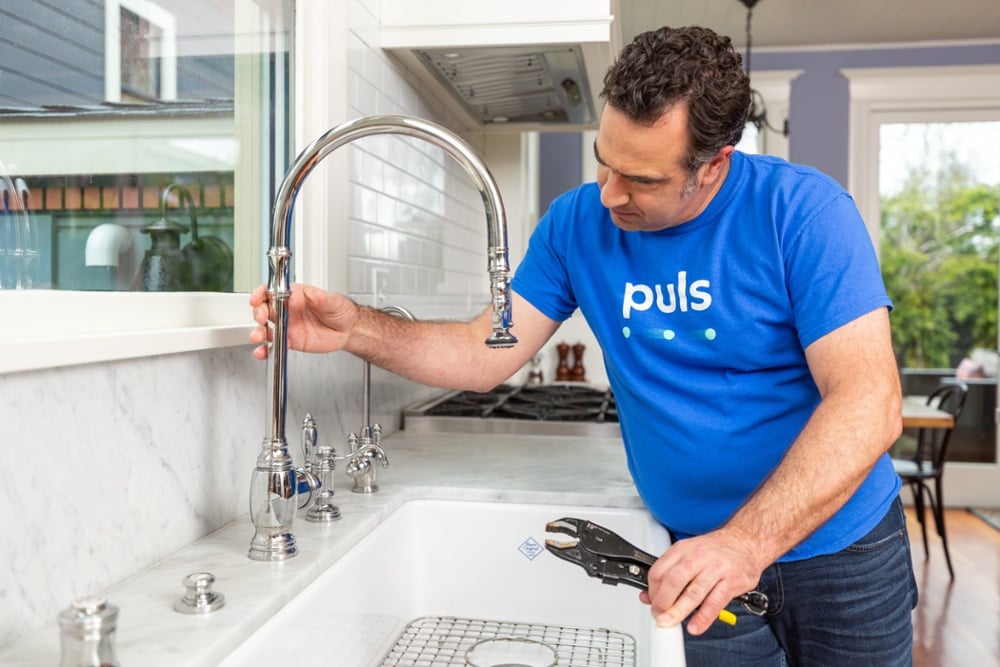Are you interested in details about Why is My Home Making Strange Plumbing Noises?

To diagnose noisy plumbing, it is essential to figure out initial whether the undesirable audios take place on the system's inlet side-in other words, when water is turned on-or on the drain side. Noises on the inlet side have varied causes: excessive water pressure, worn valve as well as faucet parts, incorrectly linked pumps or various other home appliances, improperly put pipeline bolts, and also plumbing runs containing too many limited bends or various other constraints. Sounds on the drainpipe side generally originate from bad location or, as with some inlet side sound, a design including tight bends.
Hissing
Hissing noise that takes place when a tap is opened somewhat generally signals too much water stress. Consult your regional water company if you suspect this issue; it will certainly have the ability to tell you the water stress in your location as well as can install a pressurereducing shutoff on the inbound supply of water pipeline if needed.
Other Inlet Side Noises
Creaking, squealing, scraping, snapping, and also tapping usually are brought on by the growth or contraction of pipelines, generally copper ones providing hot water. The sounds occur as the pipelines slide versus loose fasteners or strike neighboring home framing. You can frequently determine the area of the issue if the pipes are revealed; simply follow the sound when the pipelines are making noise. Most likely you will certainly find a loose pipeline wall mount or an area where pipelines exist so close to flooring joists or various other framing items that they clatter versus them. Attaching foam pipeline insulation around the pipelines at the point of contact must fix the trouble. Make sure bands and wall mounts are protected and also offer ample support. Where feasible, pipe bolts should be connected to large structural components such as foundation wall surfaces rather than to mounting; doing so reduces the transmission of vibrations from plumbing to surface areas that can amplify as well as transfer them. If affixing fasteners to framework is unavoidable, cover pipes with insulation or various other resilient product where they get in touch with bolts, and sandwich completions of new bolts between rubber washers when mounting them.
Dealing with plumbing runs that struggle with flow-restricting limited or numerous bends is a last option that needs to be undertaken only after seeking advice from a knowledgeable plumbing professional. Regrettably, this situation is rather common in older homes that might not have been developed with interior plumbing or that have seen a number of remodels, specifically by amateurs.
Babbling or Screeching
Intense chattering or shrieking that takes place when a valve or tap is activated, and that typically goes away when the fitting is opened fully, signals loosened or malfunctioning internal parts. The remedy is to change the shutoff or tap with a new one.
Pumps and appliances such as washing devices as well as dish washers can move electric motor sound to pipes if they are poorly attached. Link such items to plumbing with plastic or rubber hoses-never stiff pipe-to isolate them.
Drain Noise
On the drain side of plumbing, the principal objectives are to remove surfaces that can be struck by falling or rushing water as well as to shield pipelines to have unavoidable sounds.
In new building, bath tubs, shower stalls, commodes, and also wallmounted sinks and basins ought to be set on or against resilient underlayments to decrease the transmission of sound through them. Water-saving toilets and taps are much less loud than standard versions; mount them rather than older types even if codes in your area still permit making use of older components.
Drains that do not run up and down to the cellar or that branch right into straight pipeline runs sustained at flooring joists or various other mounting existing specifically bothersome noise problems. Such pipes are big enough to radiate substantial resonance; they likewise bring substantial quantities of water, which makes the situation even worse. In new building, specify cast-iron soil pipes (the large pipelines that drain pipes commodes) if you can manage them. Their enormity includes much of the noise made by water passing through them. Also, avoid transmitting drains in wall surfaces shown bed rooms and rooms where individuals collect. Wall surfaces including drainpipes should be soundproofed as was defined previously, utilizing double panels of sound-insulating fiberboard and also wallboard. Pipelines themselves can be wrapped with special fiberglass insulation made for the objective; such pipelines have an invulnerable vinyl skin (sometimes having lead). Outcomes are not always satisfactory.
Thudding
Thudding sound, commonly accompanied by trembling pipes, when a tap or home appliance valve is turned off is a problem called water hammer. The noise and also vibration are brought on by the reverberating wave of pressure in the water, which unexpectedly has no place to go. Occasionally opening a shutoff that discharges water promptly into an area of piping including a constraint, elbow, or tee installation can create the same problem.
Water hammer can typically be healed by installing installations called air chambers or shock absorbers in the plumbing to which the issue valves or taps are connected. These tools enable the shock wave developed by the halted flow of water to dissipate in the air they consist of, which (unlike water) is compressible.
Older plumbing systems may have brief vertical areas of capped pipe behind wall surfaces on faucet competes the same objective; these can ultimately fill with water, minimizing or destroying their efficiency. The cure is to drain pipes the water system totally by shutting off the primary water supply valve and also opening all taps. Then open up the main supply shutoff and also close the taps one at a time, beginning with the faucet nearest the valve and also finishing with the one farthest away.
WHY IS MY PLUMBING MAKING SO MUCH NOISE?
This noise indeed sounds like someone is banging a hammer against your pipes! It happens when a faucet is opened, allowed to run for a bit, then quickly shut — causing the rushing water to slam against the shut-off valve.
To remedy this, you’ll need to check and refill your air chamber. Air chambers are filled with — you guessed it — air and help absorb the shock of moving water (that comes to a sudden stop). Over time, these chambers can fill with water, making them less effective.
You’ll want to turn off your home’s water supply, then open ALL faucets (from the bathroom sink to outdoor hose bib) to drain your pipes. Then, turn the water back on and hopefully the noise stops! If you’re still hearing the sound, give us a call to examine further.
Whistles
Whistling sounds can be frustrating, as sometimes the source isn’t easily identified. However, if you can pinpoint which faucet or valve that may be the cause, you’ll likely encounter a worn gasket or washer — an easy fix if you replace the worn parts!Whistling sounds from elsewhere can mean a number of things — from high water pressure to mineral deposits. Your best plan of attack here is to give our plumbing experts a call. We’ll be able to determine where the noise is coming from and what the cause may be, then recommend an effective fix!
Cracks or Ticks
Cracking or ticking typically comes from hot water going through cold, copper pipes. This causes the copper to expand resulting in a cracking or ticking sound. Once the pipes stop expanding, the noise should stop as well.
Pro tip: you may want to lower the temperature of your water heater to see if that helps lessen the sound, or wrapping the pipe in insulation can also help muffle the noise.
Bangs
Bangs typically come from water pressure that’s too high. To test for high water pressure, get a pressure gauge and attach it to your faucet. Water pressure should be no higher than 80 psi (pounds per square inch) and also no lower than 40 psi. If you find a number greater than 80 psi, then you’ve found your problem!
Next step is to give us a call in order to install a pressure regulator. Trust us, you don’t want to wait to resolve this issue. Not only is the sound annoying, but high water pressure can be destructive to your home — including damaging certain appliances, like your washer and dishwasher.
Dripping
You might be accustom to the slow quiet drip your kitchen faucet makes. You might have even tuned out your bathroom sink dripping and drabbing all day long — but it’s time to find its cause.
A slow drip could signify a variety of easy to fix issues, such as a worn out O ring, or loose part. And by ignoring the drip, you could be wasting up to 2,000 gallons of water a year! So start conserving water — get it looked at ASAP.
https://www.pwessig.com/blog/2018/december/why-is-my-plumbing-making-so-much-noise-/

As an enthusiastic person who reads on Why Do My Plumbing Pipes Make A Knocking Noise, I figured sharing that information was worthwhile. Liked our blog? Please share it. Let other people locate it. We value reading our article about How To Fix Noisy Pipes.
View More
 Josh Saviano Then & Now!
Josh Saviano Then & Now! Jeremy Miller Then & Now!
Jeremy Miller Then & Now! Danielle Fishel Then & Now!
Danielle Fishel Then & Now! Marcus Jordan Then & Now!
Marcus Jordan Then & Now! Rachael Leigh Cook Then & Now!
Rachael Leigh Cook Then & Now!